Gramineae
Tijn Meulendijks
GRAMINEAE: TIJN MEULENDIJKS
19 June - 16 August 2020
FOREWARD
Gramineae is both an art exhibition and online resource by Netherlands-born, Cairns-based artist Tijn Meulendijks. Presented via the Incinerator Gallery website, this project documents the collaborative research, conservation and growth of native grasses across the high, mid and low-lands of Queensland. Spanning over 8 weeks, this project will culminate in the creation of a large-scale grass sculpture harvested and constructed in the artist’s studio.
Combining environmentalism, eco-science and a contemporary arts practice, Meulendijks seeks to demonstrate our integral impact and relationship to an ecosystem through weekly online chapters and findings that will be published via the Gallery website.
Gramineae is a sensory-translated experience, through which the artist asks us to ‘slow down’ and see our connections with nature. Meulendijks works as both an artist and an educator, and uses his unique perspective to share knowledge and observations as a way to encounter the awe of nature.
This project will unfold over eight weekly chapters, documenting a process-based art practice, culminating in a large-scale grass sculpture harvested and constructed in the artist's studio. This online space will co-habit Tijn Meulendijks, as an artist and ecologist, alongside Incinerator Gallery, as an incubator for creative new-growth.
INTRODUCTION
To begin, the word ‘gramineae’ comes from the botanical name for a family of flowering grasses. It is drawn from an older etymology and has since been renamed ‘poaceae.’ Meulendijks has been working in the field of environmental studies for 37 years now, and as he recalls of his formative years:
Back then my enthusiasm for botany and ecology was growing and I have spent many, many hours doing field work as a member of the NJN (Netherlands Youth Association for Nature) studying photographing and researching wild flowers and their ecology in forests, meadows and moorlands all over the Netherlands and other countries in Europe.
Throughout this project, Meulendijks acknowledges the classification of landscape – places at once foreign and familiar to himself, and others. In Gramineae, he seeks to underpin the integral relationship and impact humans have upon an immediate ecology, and how through close observation (and inherent reverence) of the landscape we may unearth our latent connection to the earth – a two-way relationship of nurturing and caring. The works presented in Gramineae, as like many other works of Meulendijks’ practice, reflect what he calls “nature experiences.”
Meulendijks believes that “nature experiences” are for everyone. Yet for himself, “besides the scientific experience more prominent in [his] past,” he sees a unique “aesthetic experience of nature,” that may become more relevant when he starts to look at plants and landscape as an artist, more so than a scientist:
This has conflicts, especially here in Australia. Where many plants that I have worked with are classified invasive noxious weeds. But those plants, it’s still nature… many of those species are either introduced on purpose or have travelled with us. They are so called “Culture followers”. Plant species that thrive on locations where eco systems have been disturbed by human intervention.
For a scientist, this ‘Nature’ is not the true nature. They are weeds, they do not belong there and should be removed. Of course, I agree with this, but as an artist to see plants thriving on a bulldozed wasteland, between cracks in tarmac, on roadsides etc., even if they are ‘weeds’, I find this [nature] moving and beautiful. Those plants are pioneers, they are always the first step into a succession towards a complex ecosystem.
Here, Meulendijks sees art and science as opponents, and through their dichotomies of the “nature experience” he sees the battle as such: the science of nature vs. the experience of nature.
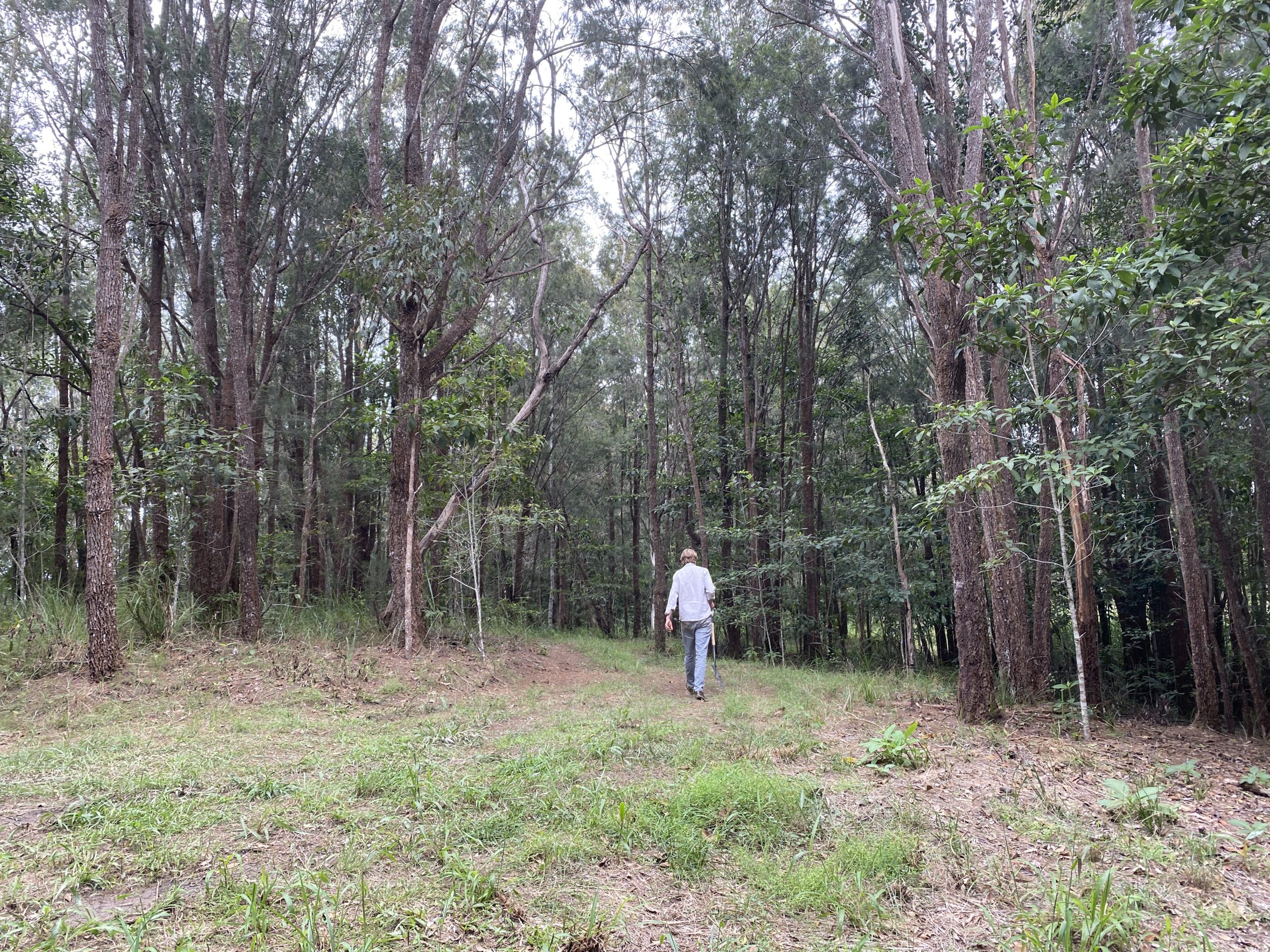
Tijn Meulendijks, still from Gramineae documentary 2020, filmed by Rosie Rosie Miller, photographed by Michael Marzik, Editor/Music by by Melania Jack, Sound Mix/Music by Patty Preece. Courtesy of the artists, produced by Incinerator Gallery.
II. CAESITAS
The collection of drawings Caesitas or Blueness are a record of a two hour walk in a meadow in Mungana National Park in North Queensland. These drawings consist of small marks and traces left behind by touching the little flowers of Commelina cyanea.
A walk through those grasslands with no other reason than to be there, to achieve a sense of belonging. In the sphere of the landscape experience of the Romanticism. These drawings are morning drawings per se, as the tiny flowers of Commelina cyanea are only flowering in the early morning while the dew of the previous night is still present over the field. When the sun dries up the dew, the flowers are no more.
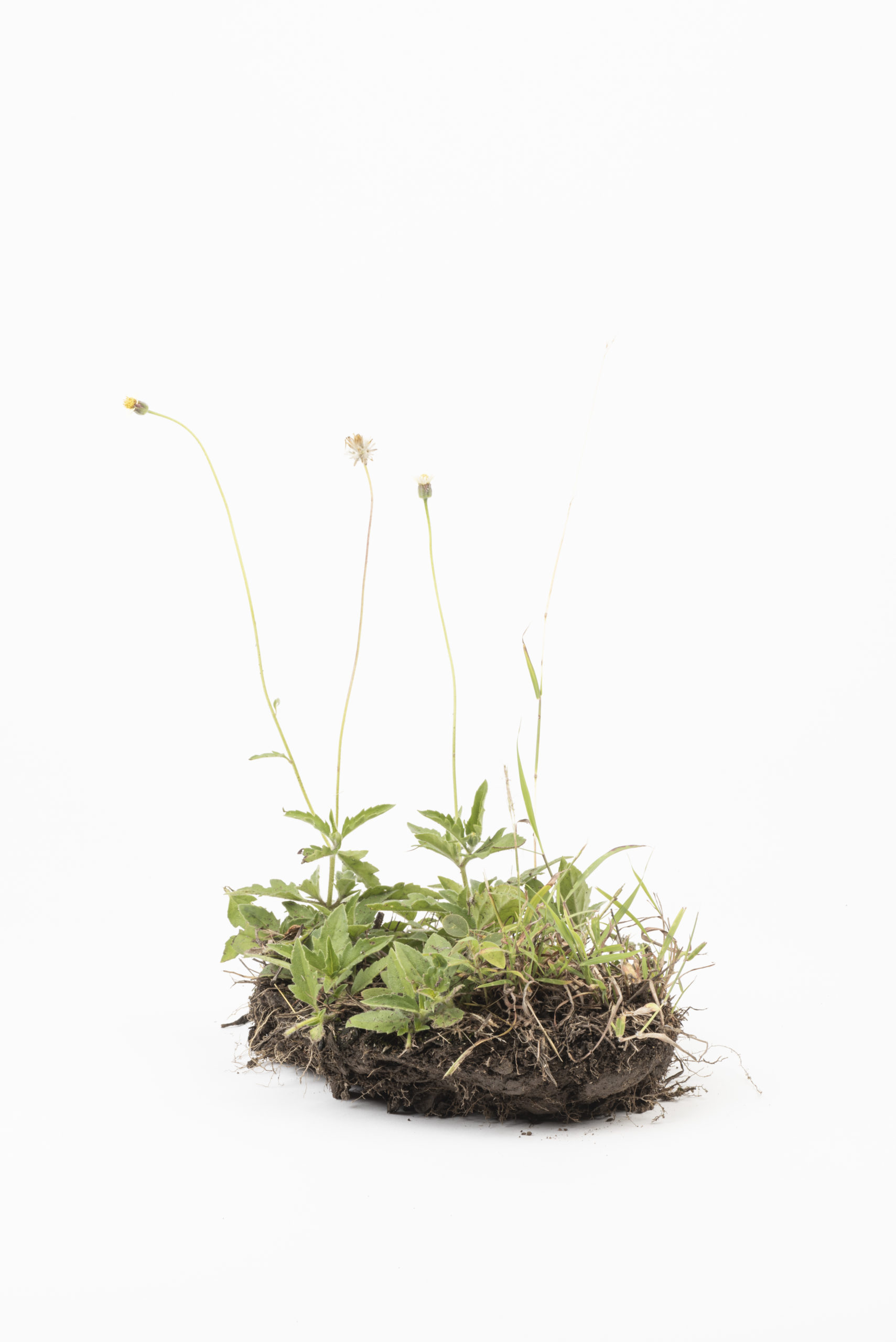
Tijn Meulendijks, Fieldwork / “Where we walked, where we might walk" 2020, collection of landscape samples FNQ. Dimensions variable. Photography: Michael Marzik.
Tijn Meulendijks
Tijn Meulendijks is best-known for his large-scale, immersive installations that reinterpret and recreate a natural environment within the gallery space. He approaches his work with the dual scientific/aesthete mindset of a botanist-cum-artist.it crosses the boundaries of contemporary art , natural sciences and floral design.
Meulendijks obtained a Master’s Degree in Floral Design in Hertogenbosch, Netherlands before migrating to Far North Queensland in 2004. He has cultivated a lifelong interest in botany, collecting and documenting plant remnants, soil, seeds, species of vegetation and other organic materials to use in his installations, works on paper and floral designs.
A meticulous recreation of the elaborate, often haphazard compositions found in nature, his novel compositions isolate, transplant and reposition organic elements to provoke a sensory experience in the viewer. Meulendijks simultaneously shows great restraint and a respect for his materials by methodically preserving them and allowing their natural forms to guide his creative process.
His work is not about the end result alone, but about the process of making, its thinking, meditating, caring. Ultimately, the affect of the plant world upon human emotion is inspirational, a fundamental recognition of the life force around us.
A continuous experience showing various stages of natural cycles, germinating, growth and decay.
Vegetative sculptures transform the gallery space by redefining its proportions or rerouting the movement of people. By positioning organic elements as art objects Meulendijks calls into question the very nature of creativity.
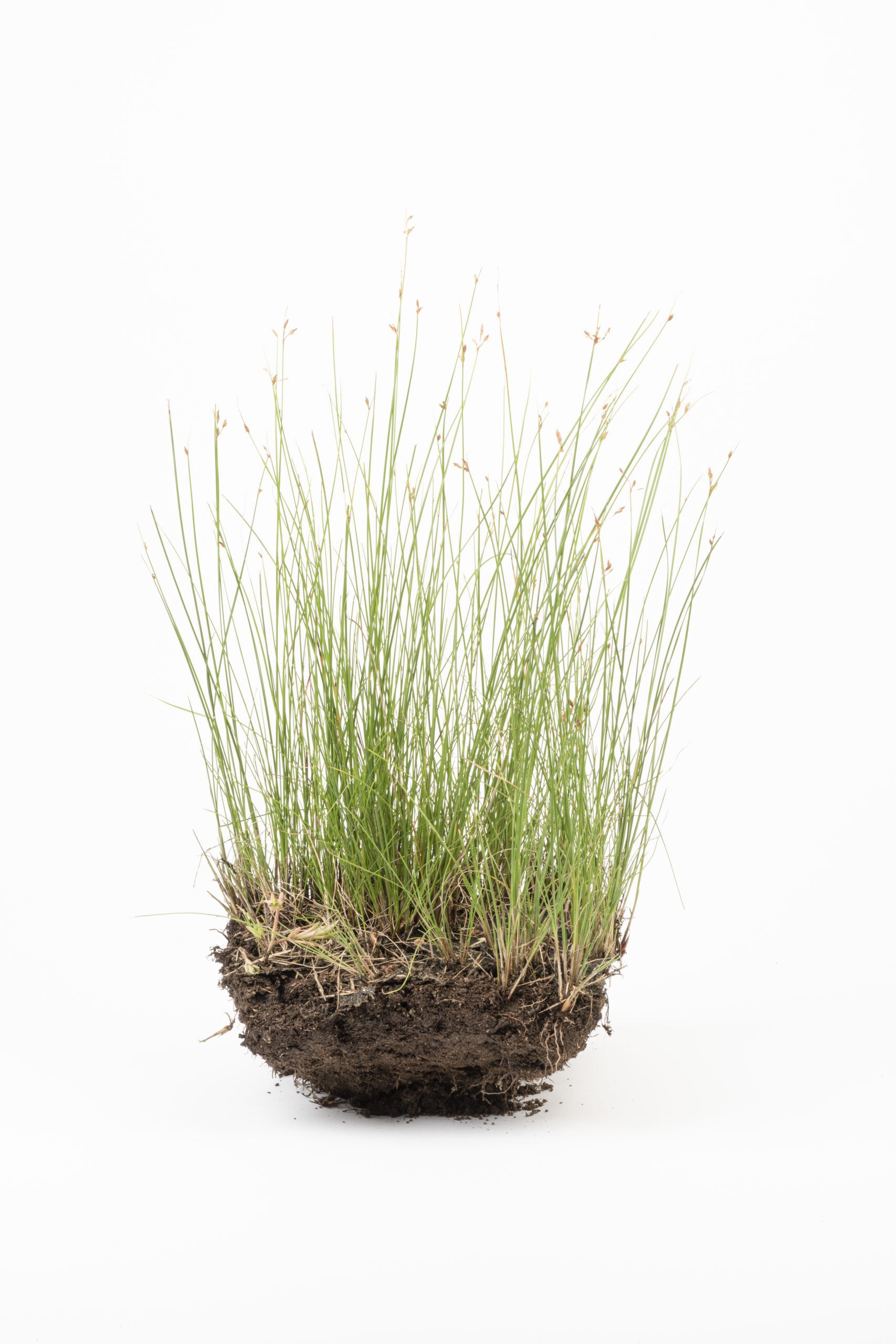
Tijn Meulendijks, Fieldwork / “Where we walked, where we might walk" 2020, collection of landscape samples FNQ. Dimensions variable. Photography: Michael Marzik.
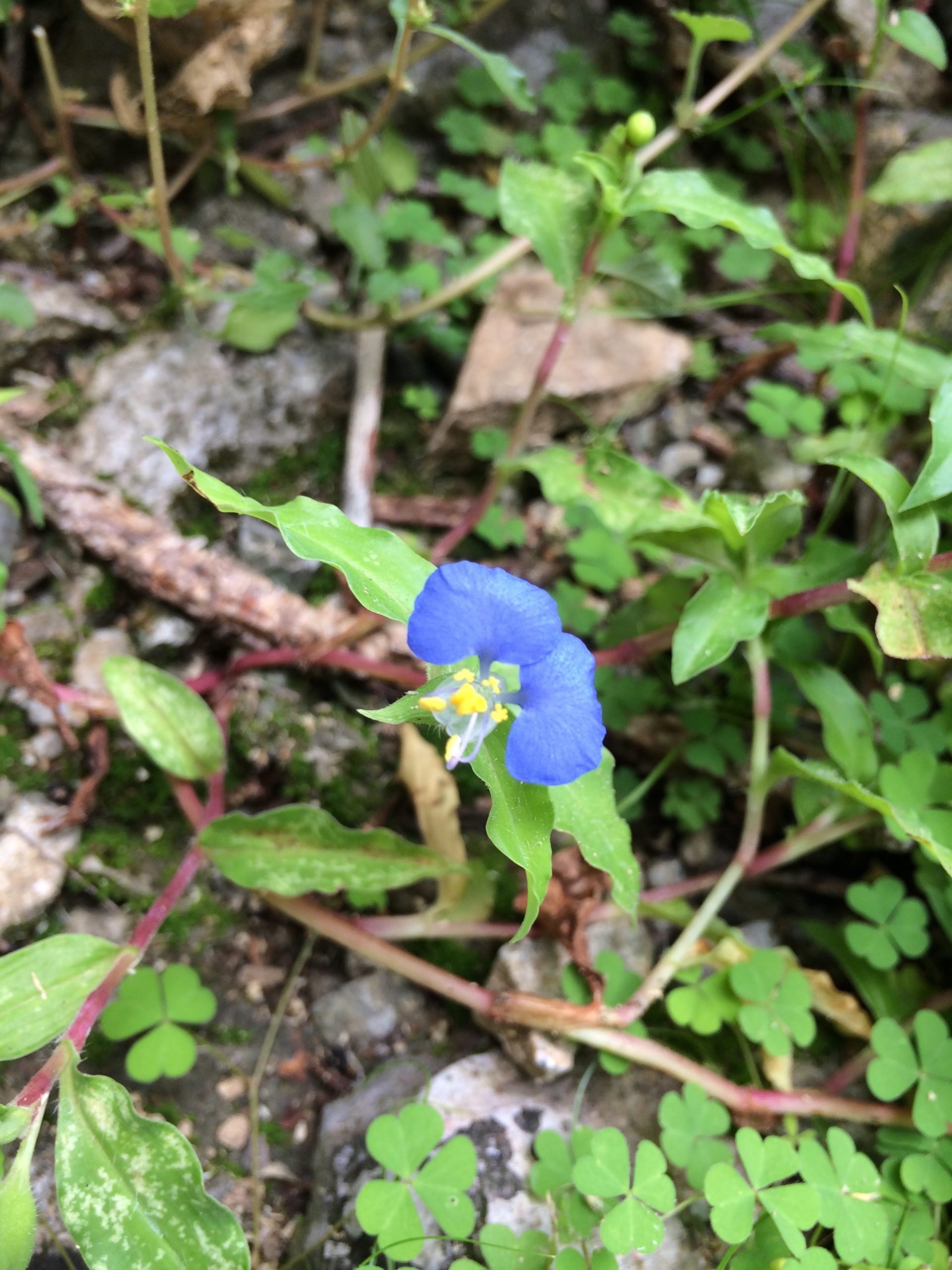
Above: Commelina cyanea
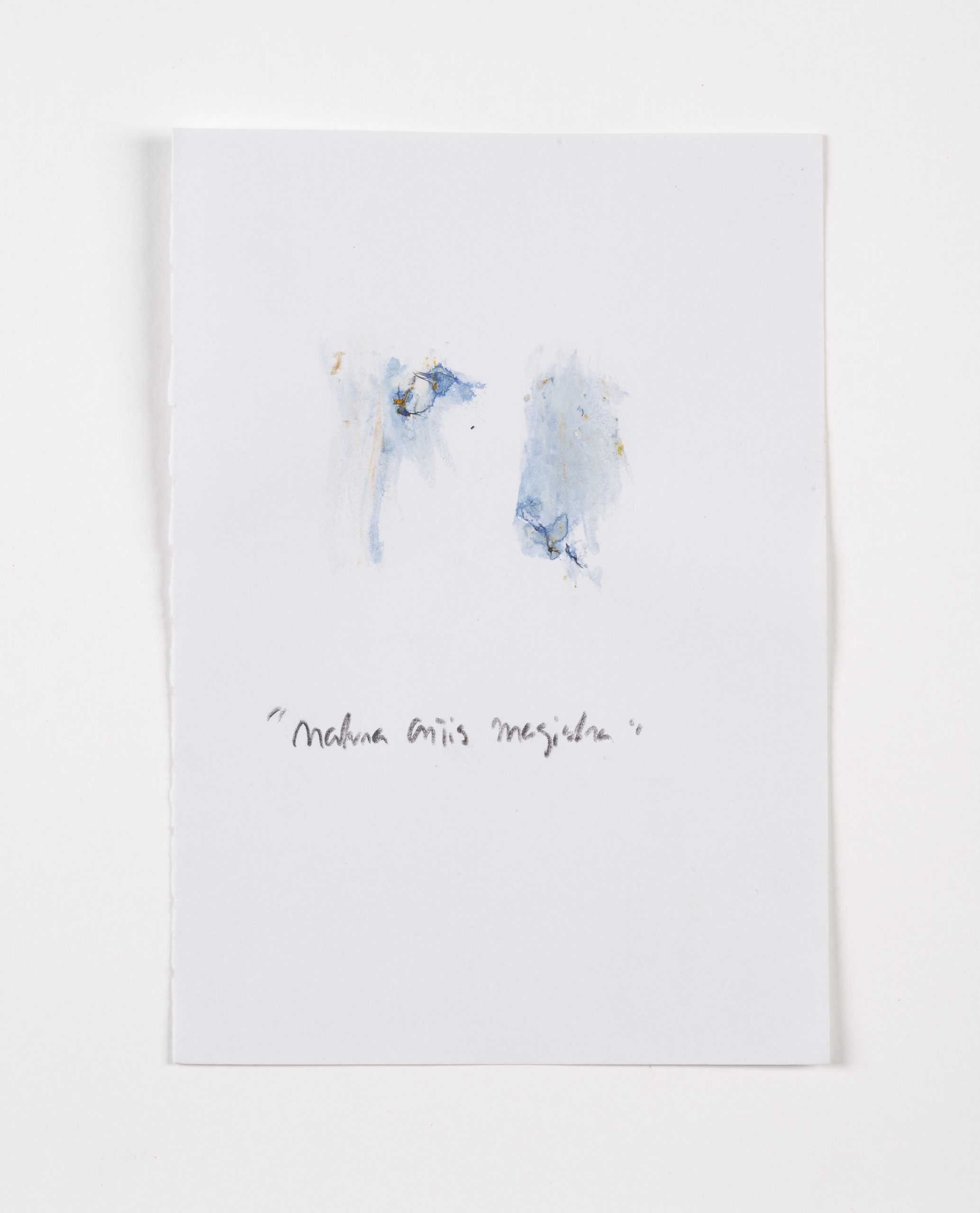
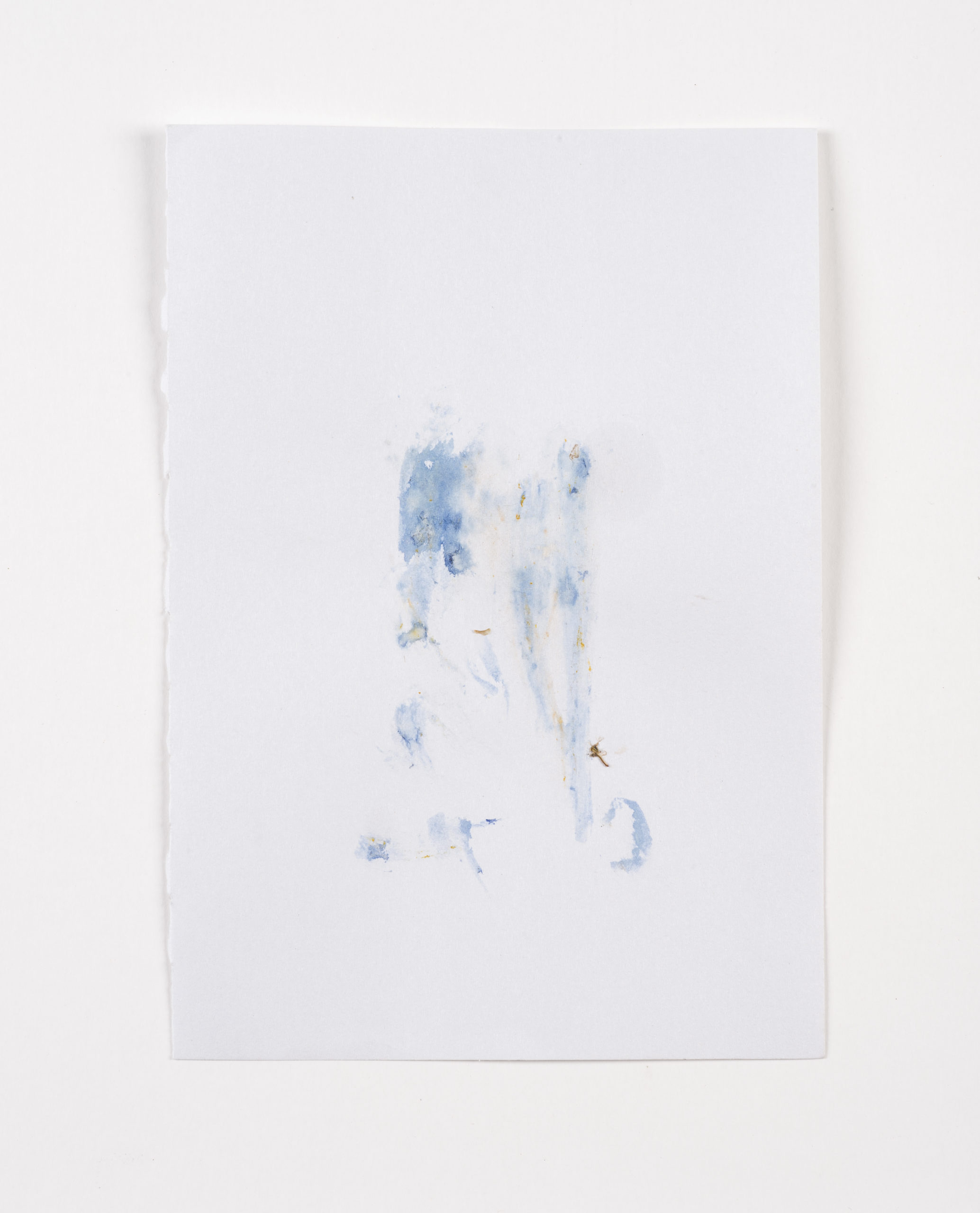
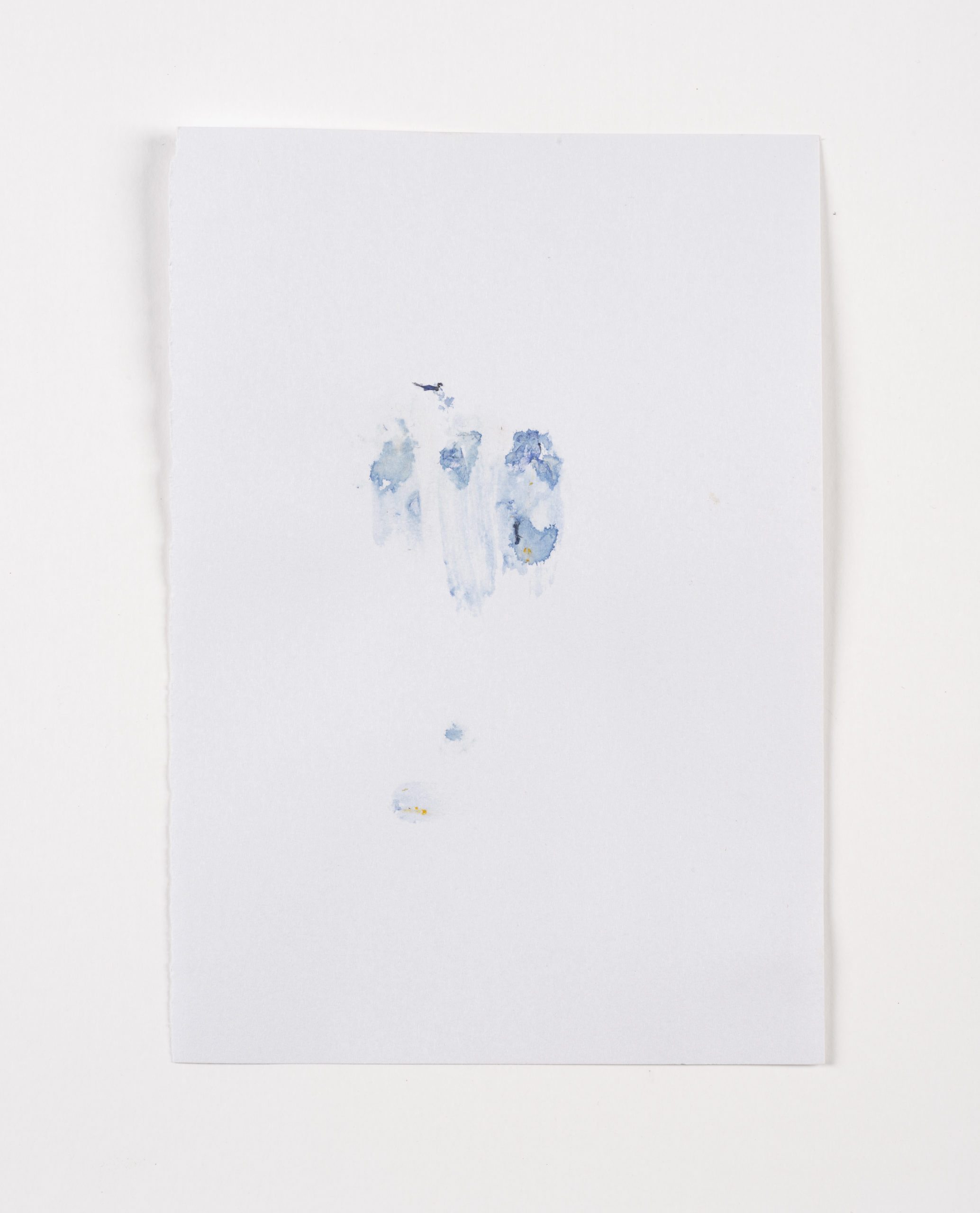
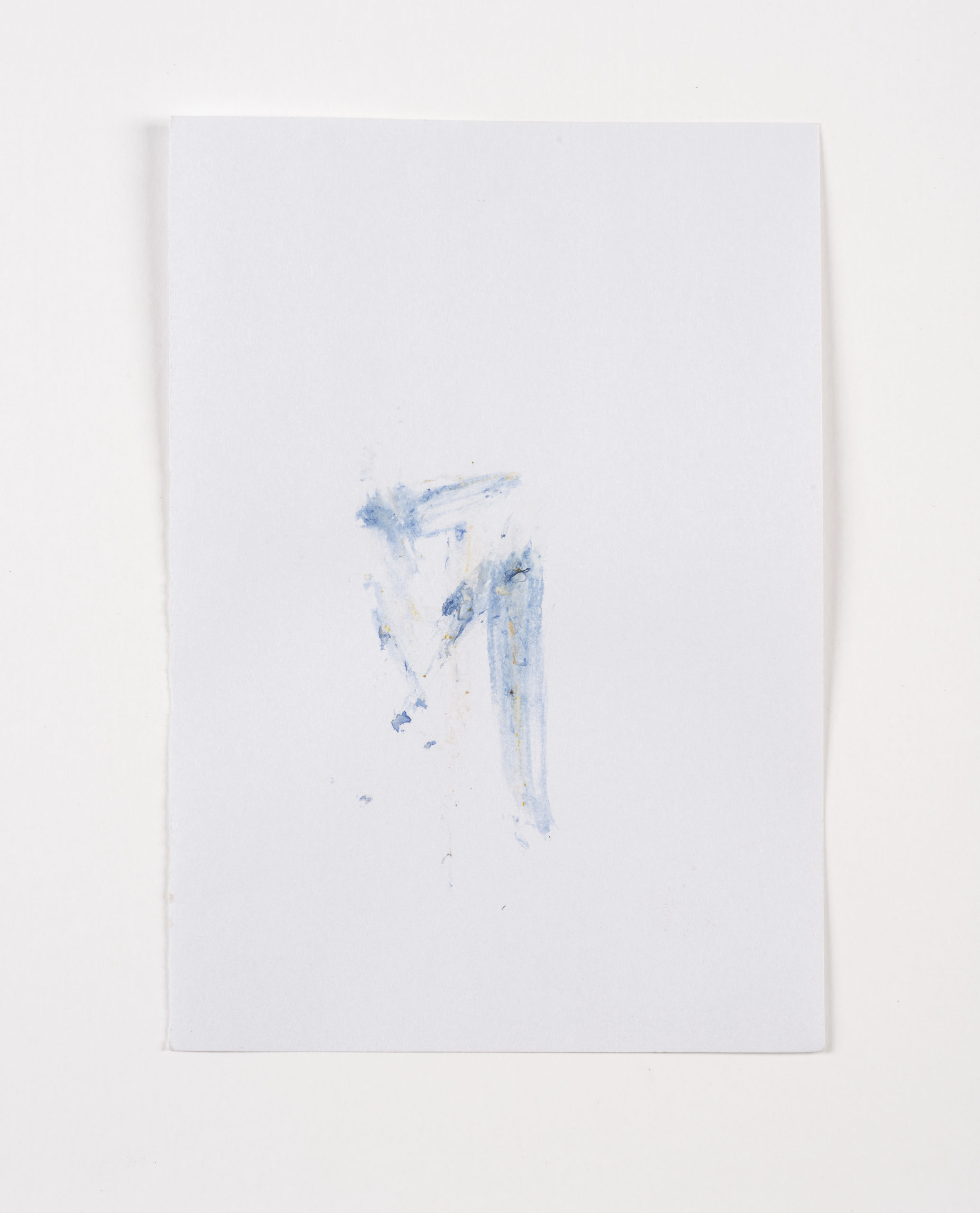
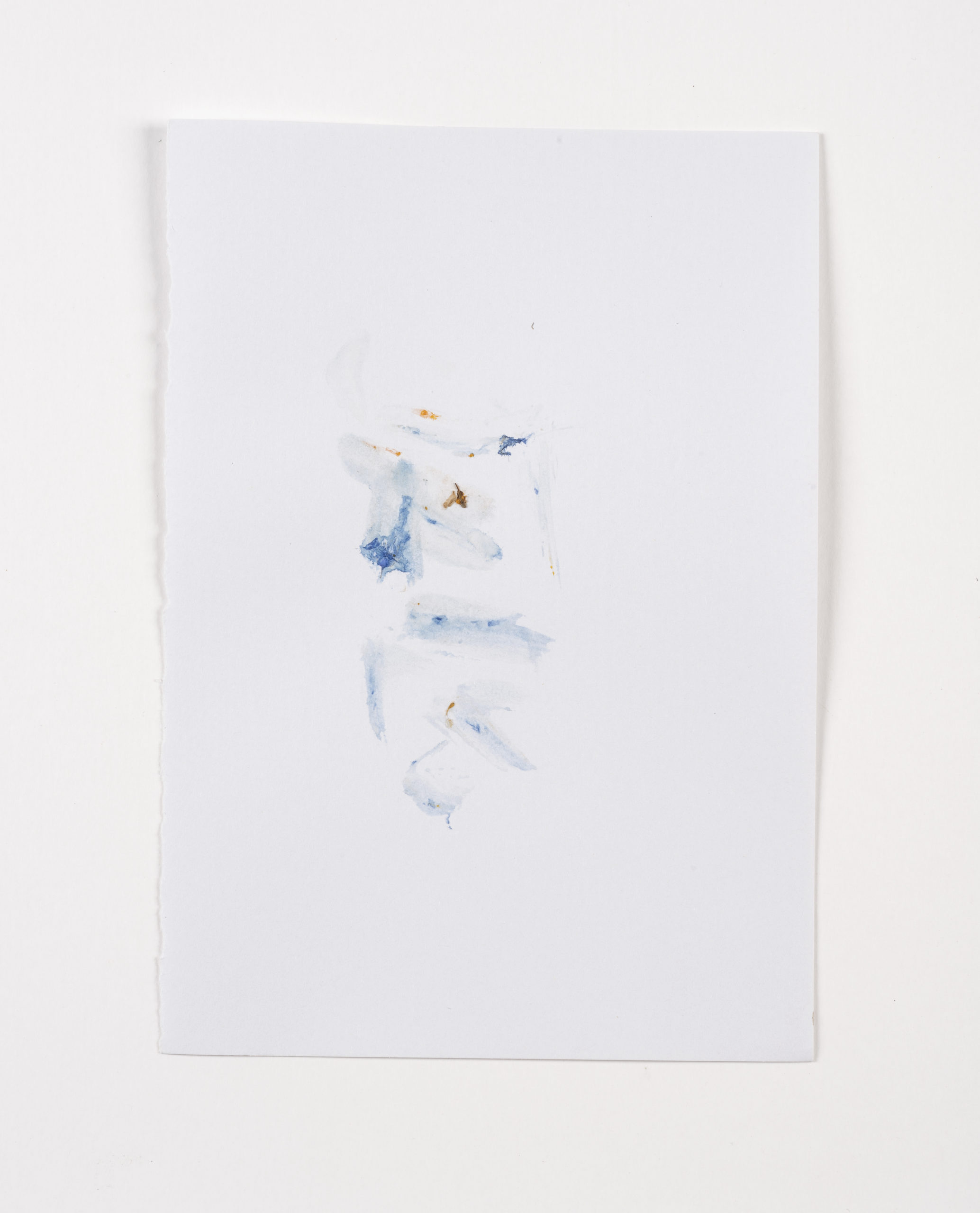

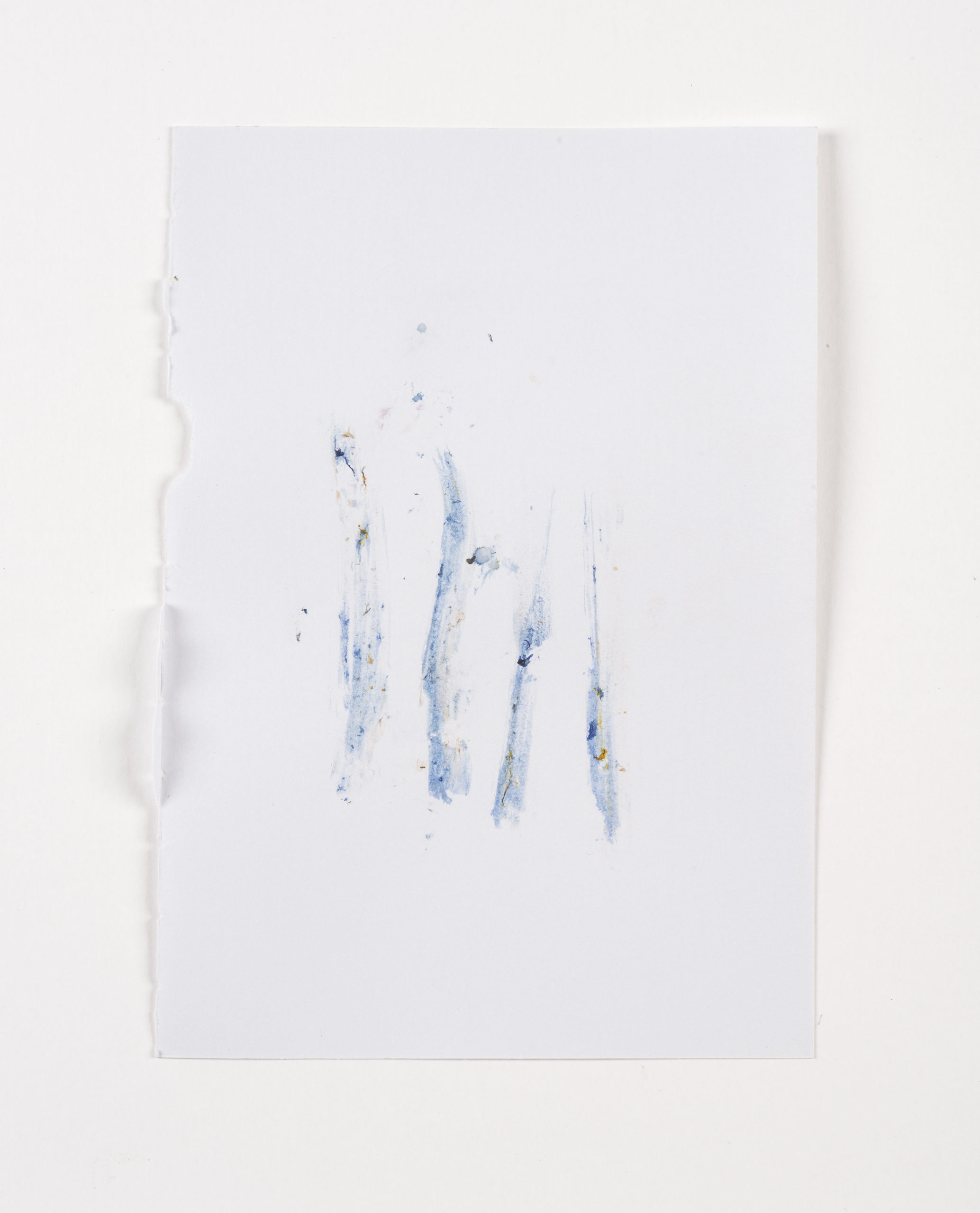
Tijn Meulendijks, Caesitas (Blueness) 2015, plant material on paper (Commelina cyanea) series of 33 drawings.
Photography of works: Michael Marzik
III. ROOT DRAWINGS
It is part of a series of studio-based works, where soil and plant growth are changing the nature of the paper, and by doing so, changing our perception. What happened here, is merely an action performed by the growing plants.
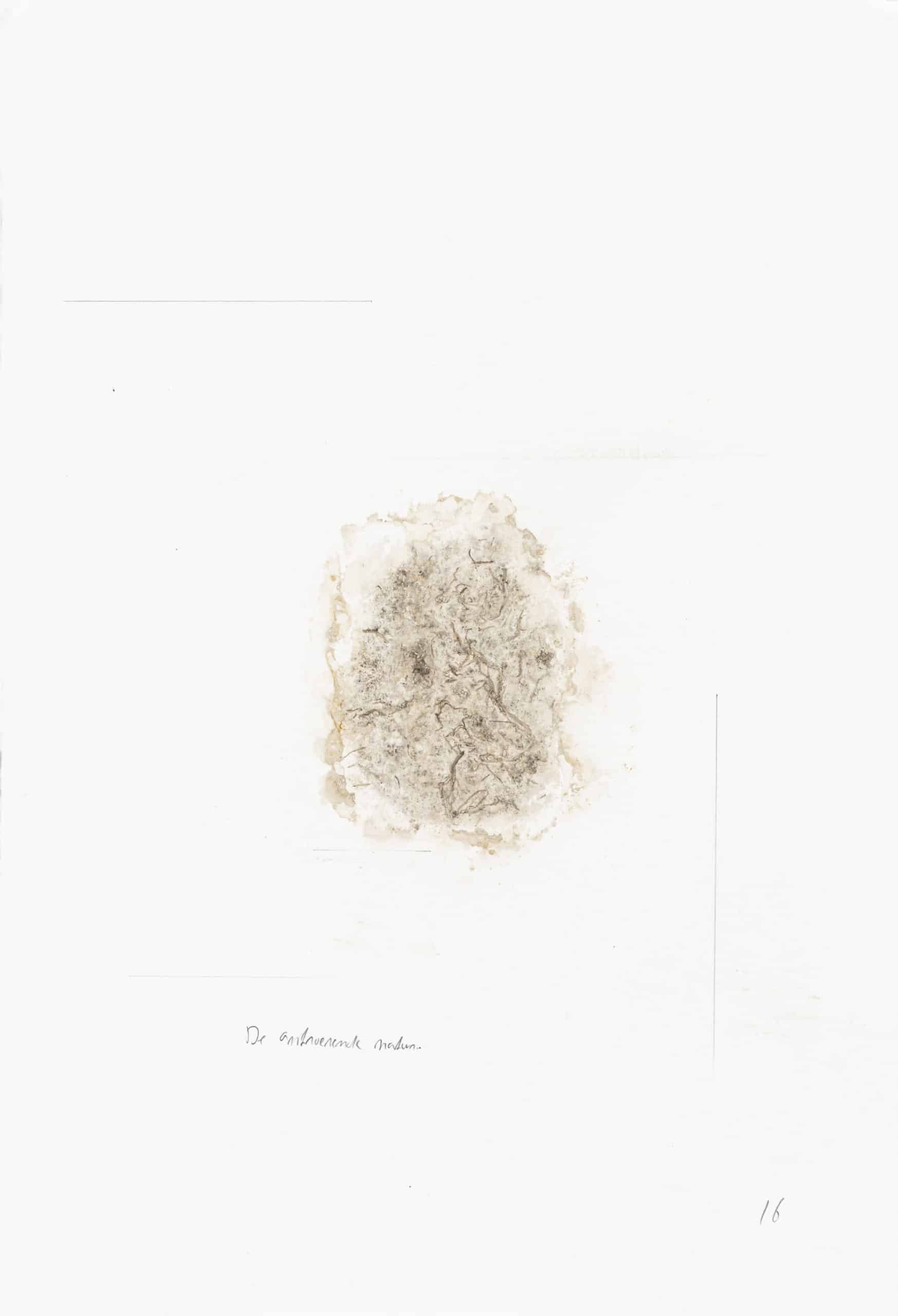

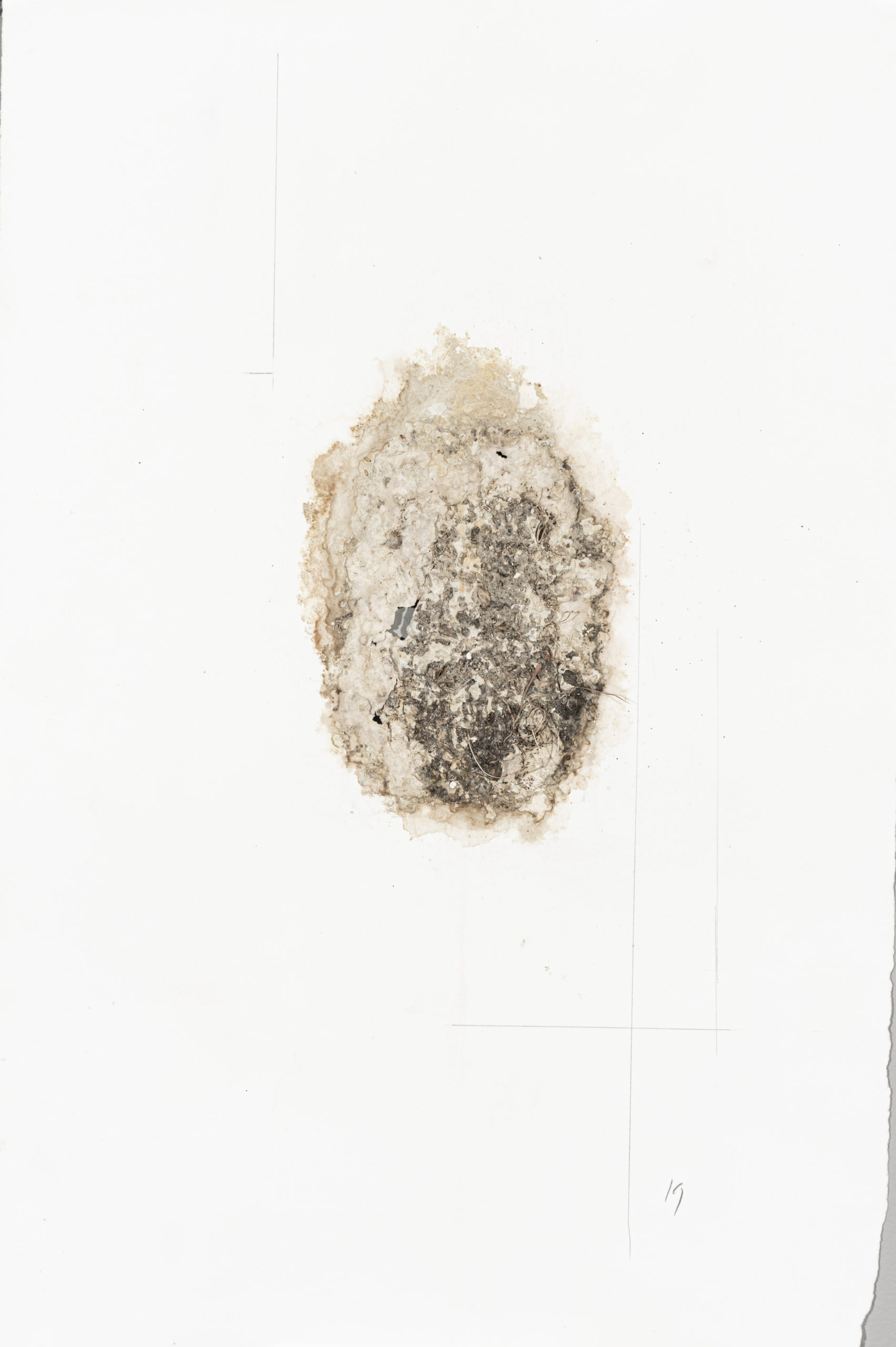
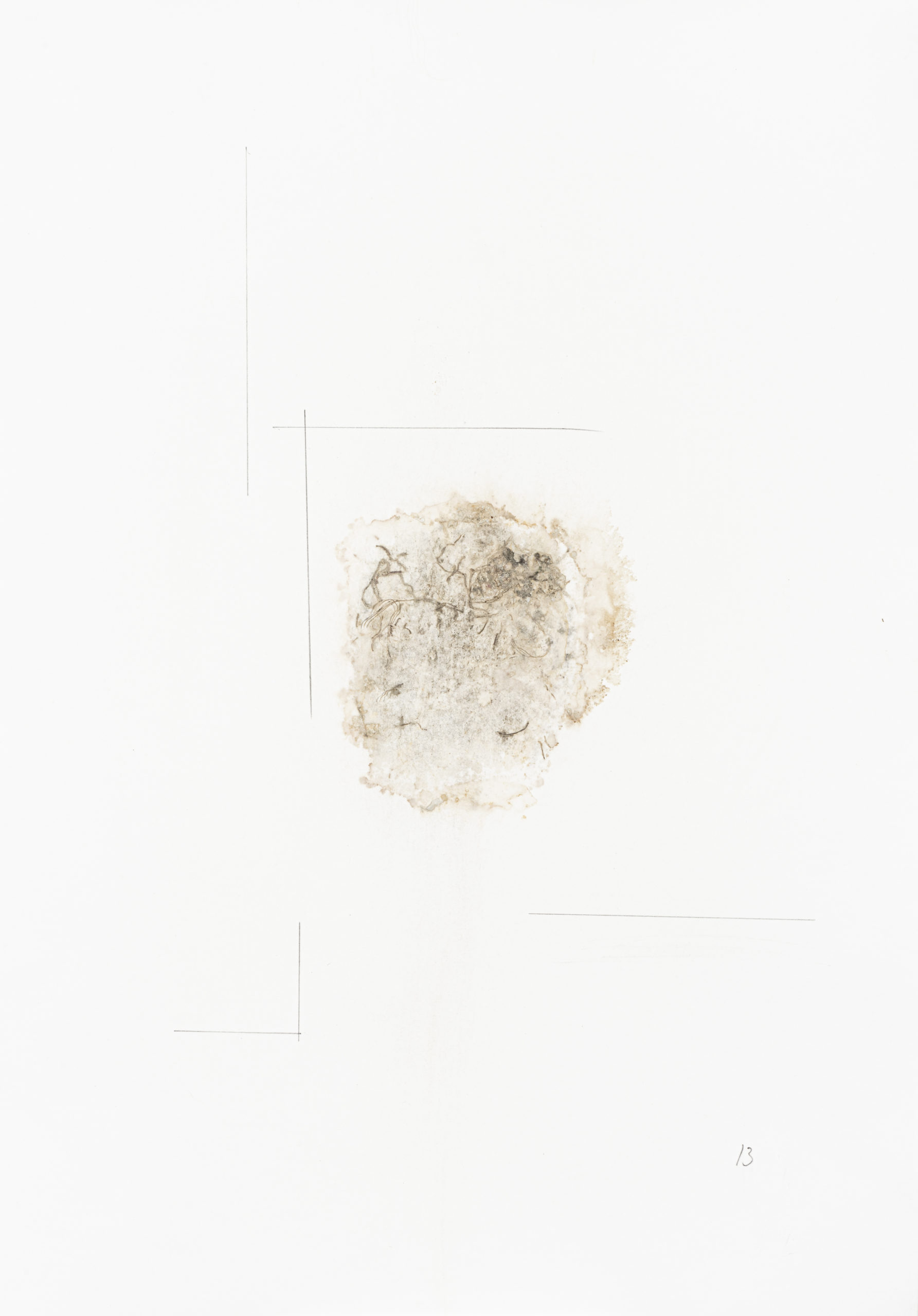
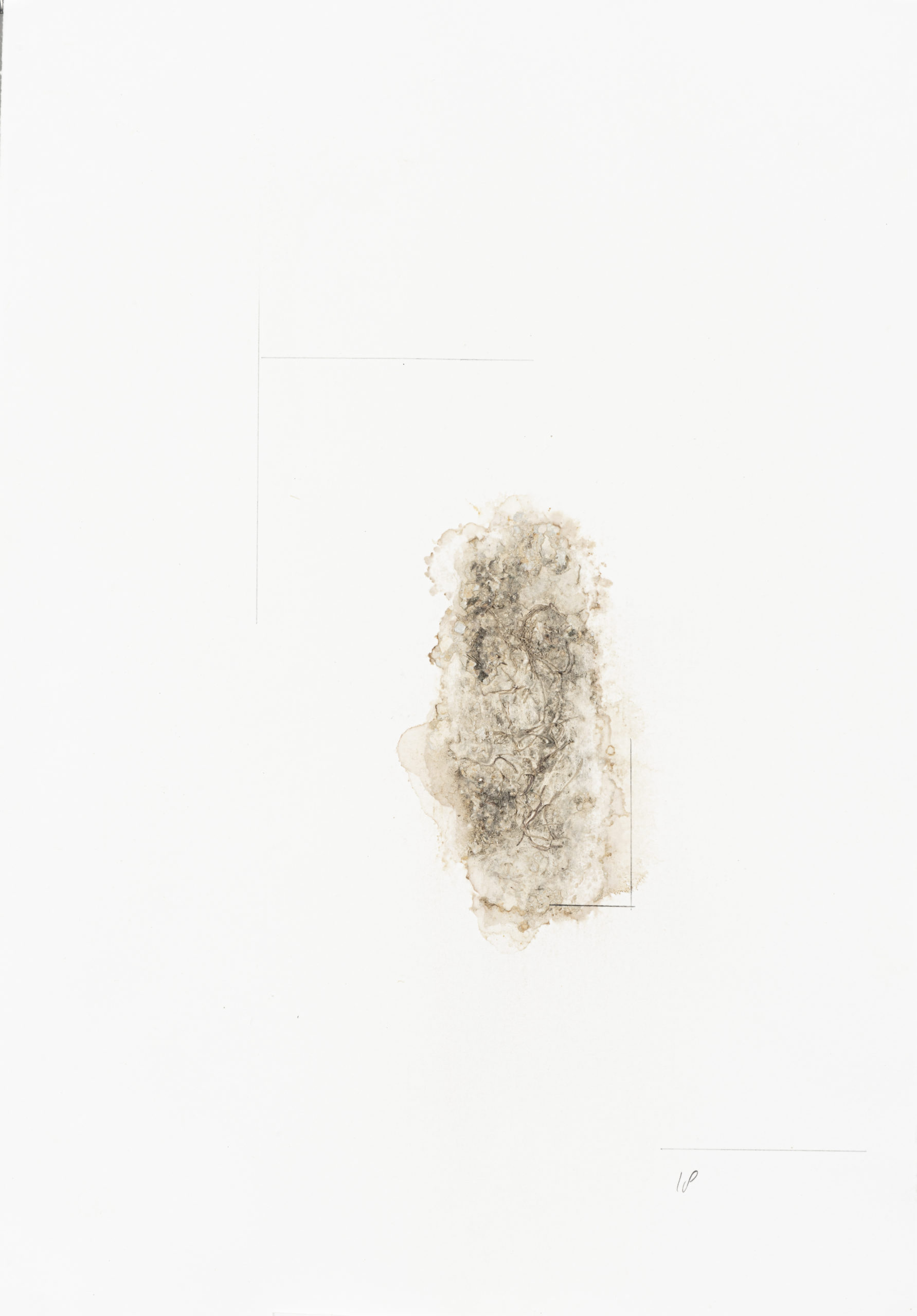
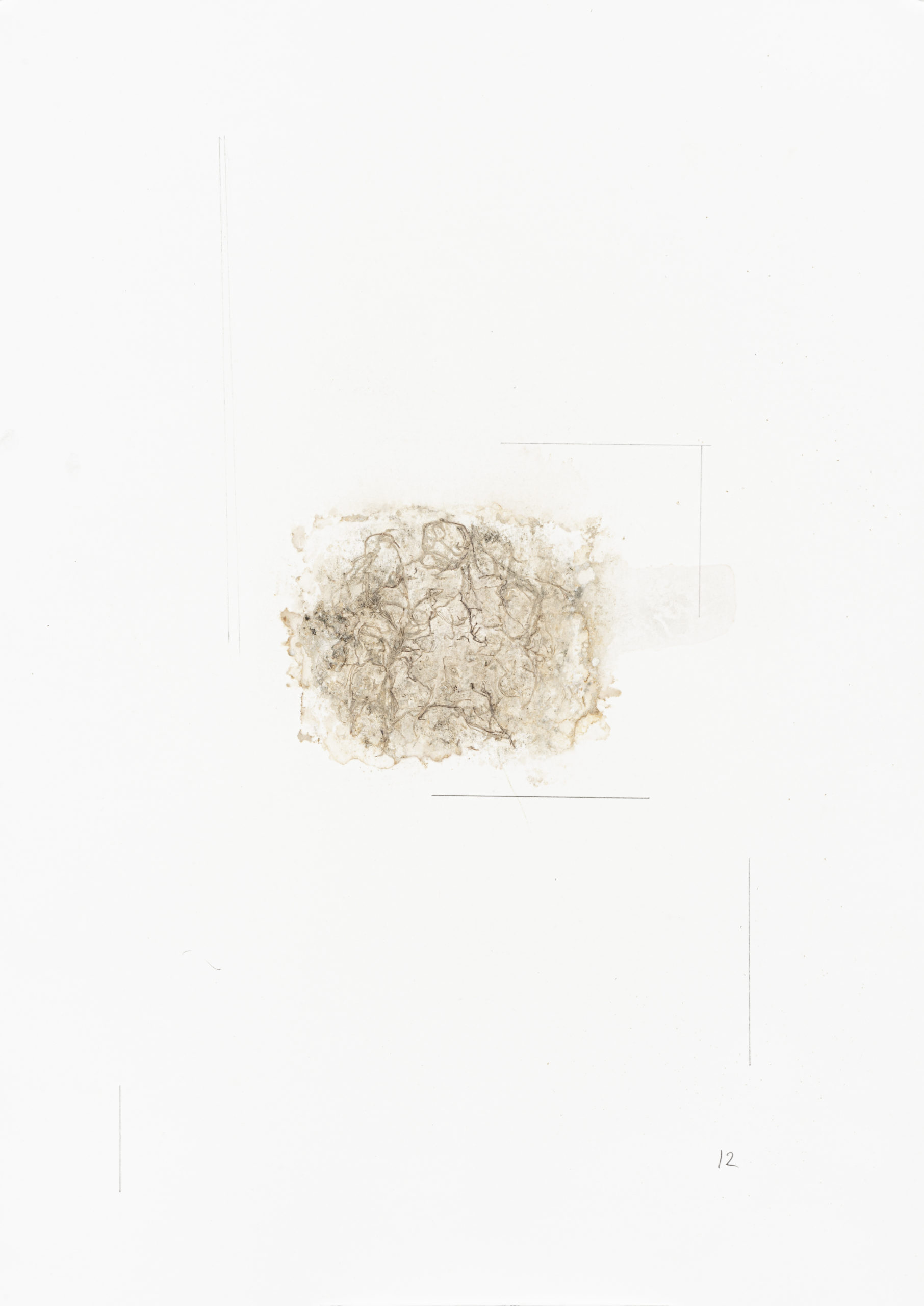
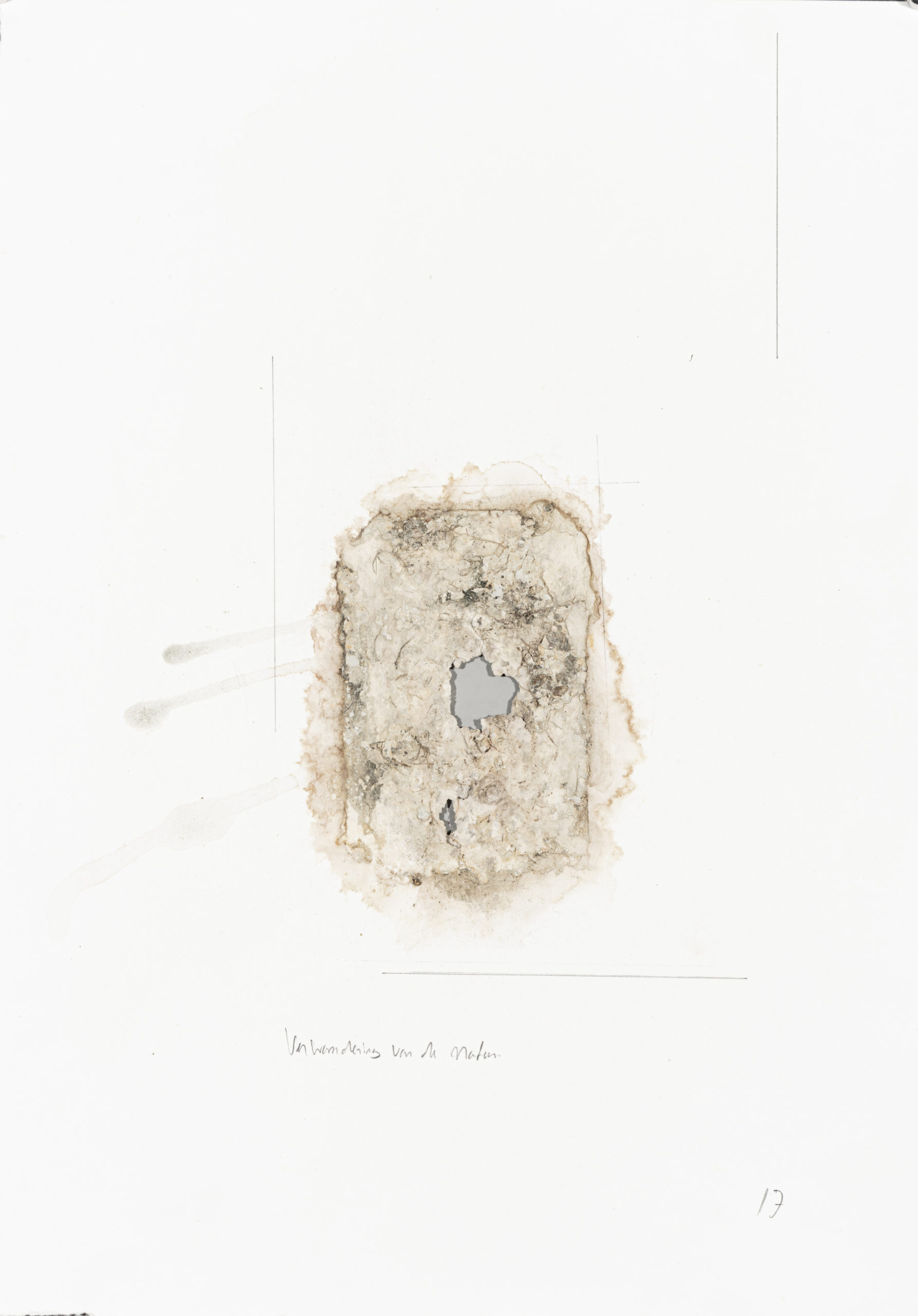

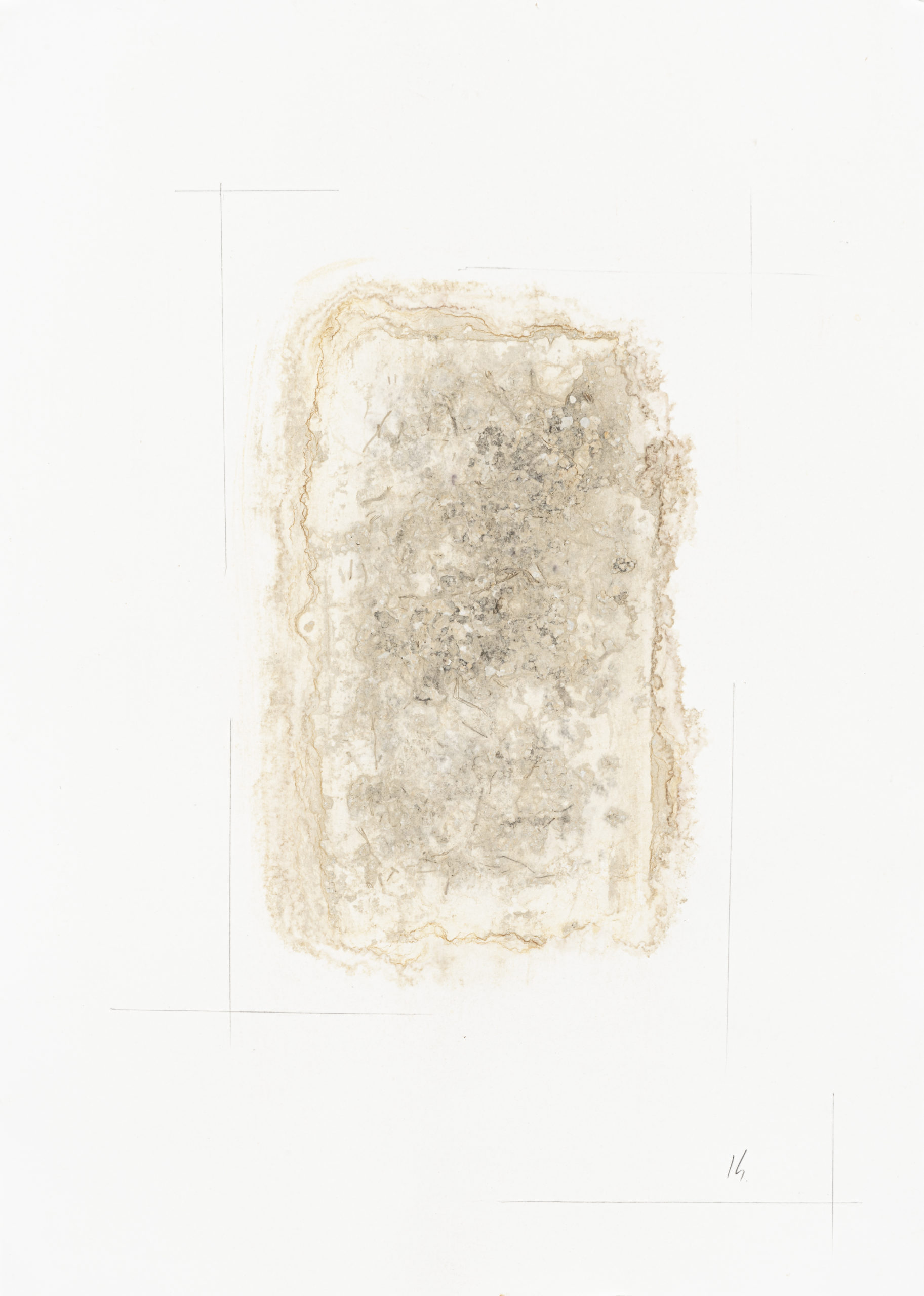
Tijn Meulendijks, Root Drawings 2020, soil, plant actions, pencil on paper. Dimensions 55cm x 38cm. Photography of works: Michael Marzik


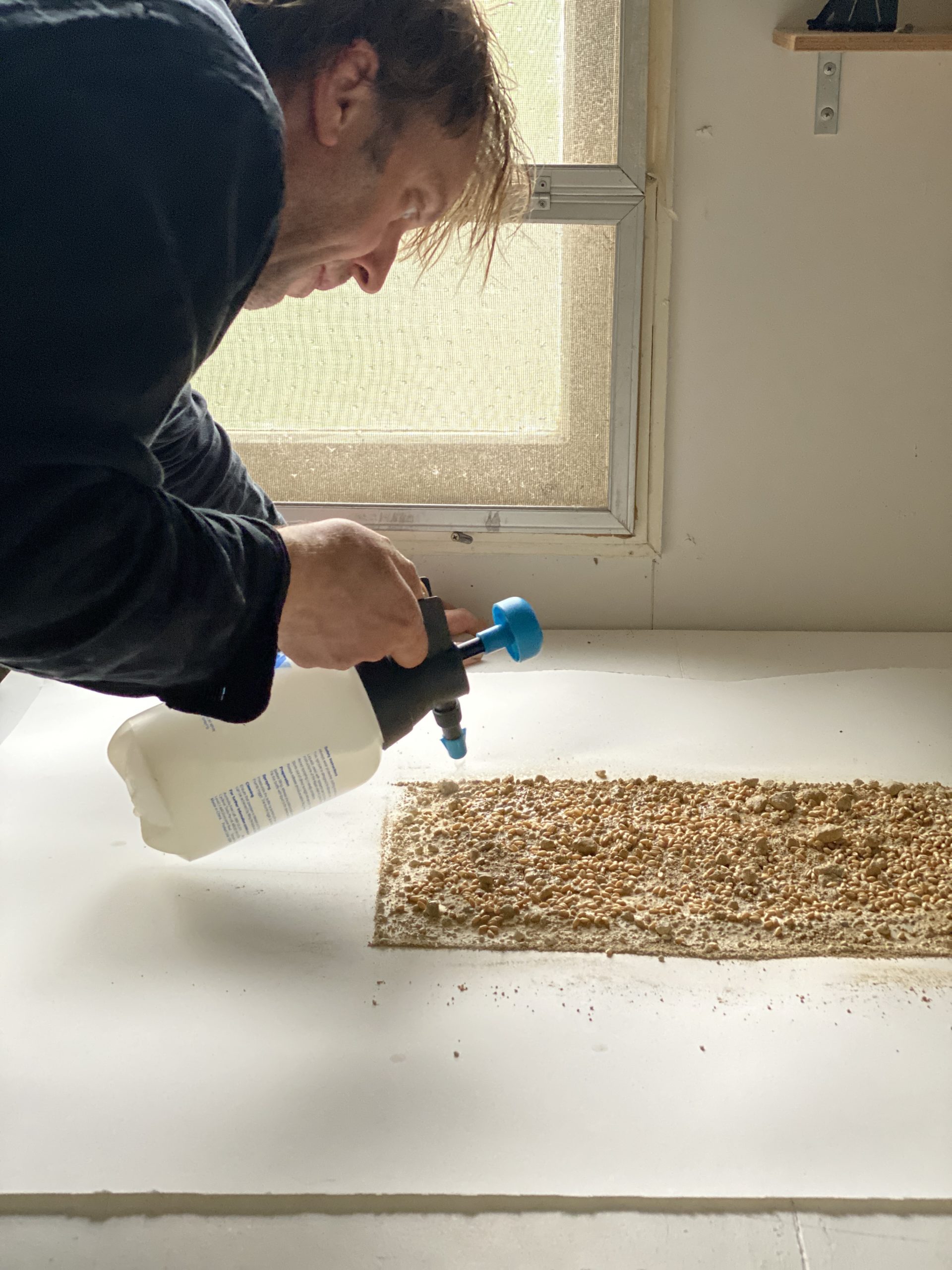
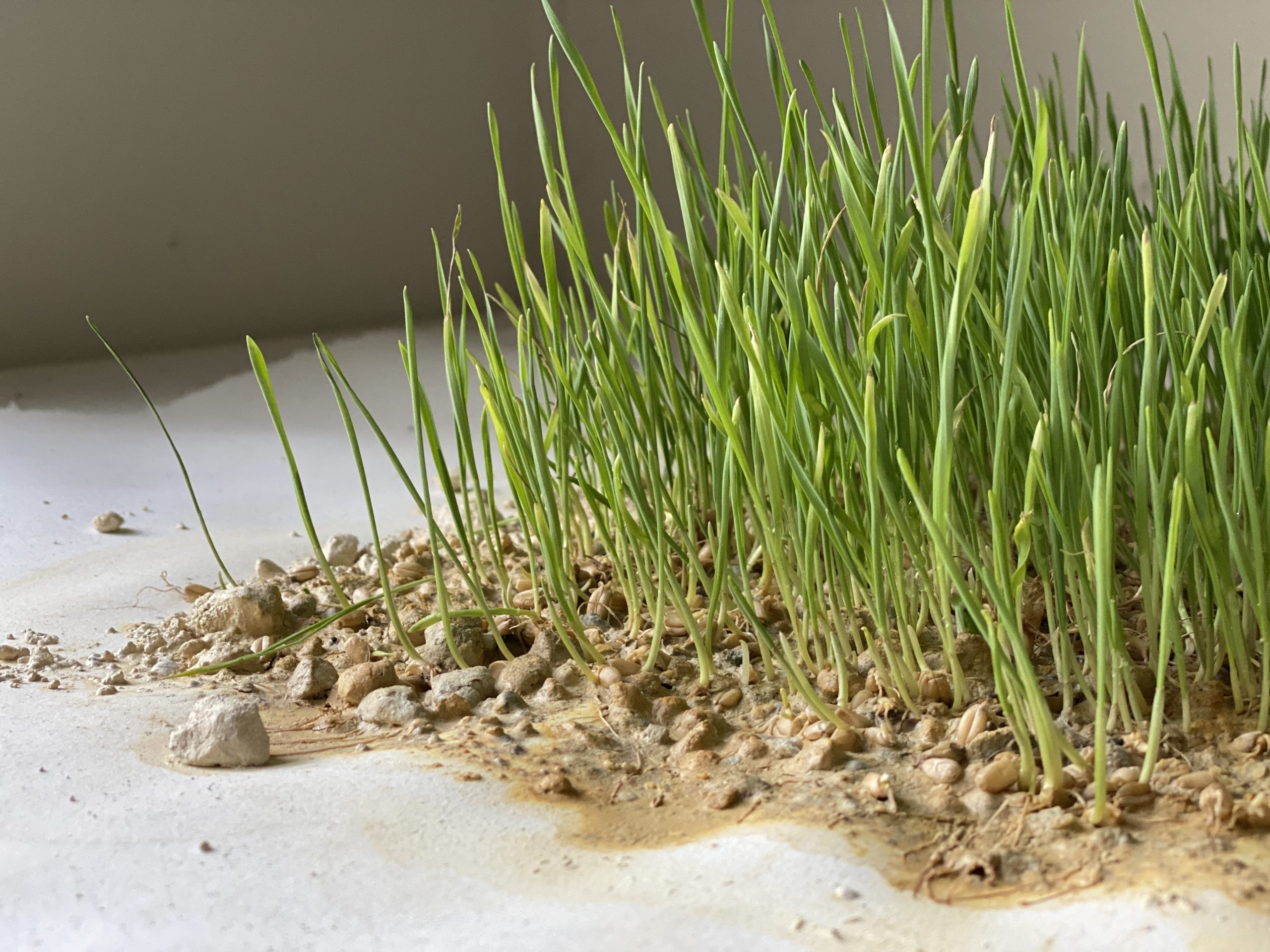
The making of Root Drawings in the artist's studio.
IV. FIELDWORK: Where we once walked / Where we might walk again.
This series of photographs have been captured by my good friend Michael Marzik. I would best describe the objects as “Landscape Samples” -- pieces of landscape / vegetation, collected from 3 different locations in the area we live in:
Coastal Urban; Highland Rainforest, on the Southern Atherton Tablelands; and highland dry sclerophyll forest off the Herberton Range.
I also consider these Landscape Samples as “foot steps” -- collected from places where you might walk over. And in doing so, these vegetative objects become reminders of those walks; they are connected to a location, a place, a muse, or a day dream. A season after rain, before rain, morning, afternoon.
I consider walking through the countryside as an attempt to search for the link between human and nature. By walking in this context - in the foot steps of the artists and writers of Romanticism - my mind and ears are filled with Beethoven’s Symphony no. 6, 'the Pastoral'.
20 years ago, I walked 600 kilometers through the north of Spain.
As a trained floral designer, I also observe these objects with my design eyes.
And I can see the most perfect composition of plant forms. A composition that I can’t make with my hands.






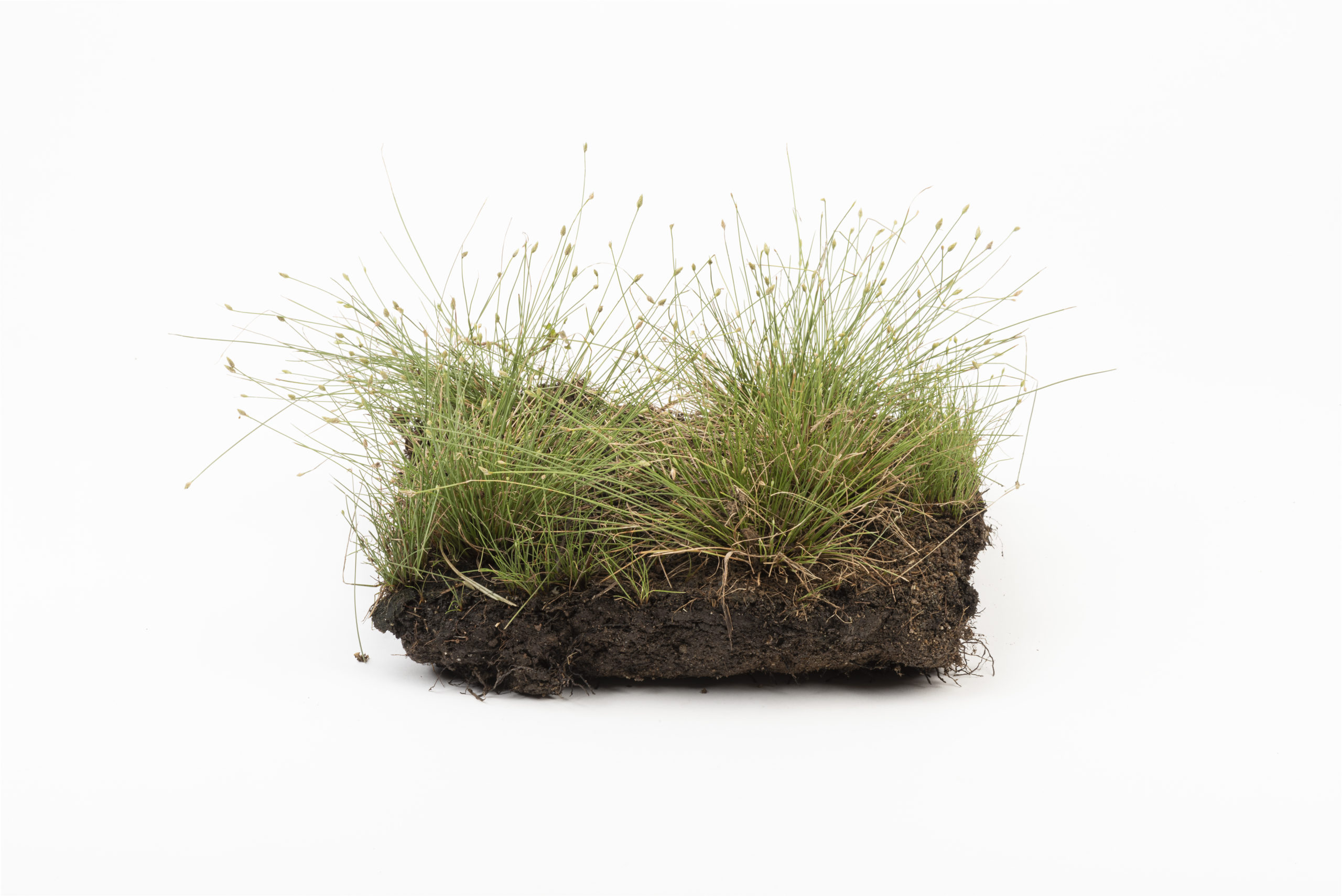
Tijn Meulendijks, Fieldwork / “Where we walked, where we might walk" 2020, collection of landscape samples FNQ. Dimensions variable. Photography: Michael Marzik.
"These landscape samples, for me they also relate to walking, direct to the action of walking, because walking or wandering...as in, walking without a destination...is the desire for the unity between human and nature...walking establishes an immediate contact."
V. DOCUMENTARY
This week we present Gramineae, the documentary. In this film we follow Meulendijks through his journey across landscape and the footsteps in creating this online studio project.
Combining environmentalism, eco-science and a contemporary arts practice, Meulendijks seeks to demonstrate our integral impact and relationship to an ecosystem.

Tijn Meulendijks, Gramineae documentary 2020, filmed by Rosie Rosie Miller, photographed by Michael Marzik, Editor/Music by by Melania Jack, Sound Mix/Music by Patty Preece. Courtesy of the artists, produced by Incinerator Gallery.
VI. GRAMINEAE: the Grasses Family
Tijn Meulendjiks:
Why did I choose to focus and work with Grasses in recent years?
This happened when I was invited to develop a new work for a contemporary ceramic exhibition.
For me, working with flora and landscape, the link between ceramic was read in 'clay' and 'earth' and so the traditional form of the 'vessel' was easily made.
-
Almost everybody must have seen at some point in their lives the image of abandoned pots with weeds growing in them - grasses most likely - because the seeds from many species are dispersed by wind.
The seeds will find the pot, and then start growing there. I have seen that many times.
-
'Gramineae' is the latest project in an ongoing sereis of works
It is a slow process that involves spending time in the landscape collecting material, and while being there, becoming familiar with the plant. I observe its properties, as every grass species is different - how it grows, how it behaves. These observations become another experience of the landscape.
Within these works, I attempt to find an engagement with those sites - with the landscape, with nature, our nature experiences and memories. To focus on both habitat, location and grass species, and a working method guided by their morphology. I work towards an experience, a sensory one with fragile movements and fragrance.
- Wednesday 7 August, 2020.
This chapter is divided into three segments:
i. COLLECTING GRASSES
Video credit : Rosie Miller
ii. MAKING OF GRAMINEAE
Harvested from invasive local grasses, known as Green panic grass, or Megathyrsus Maximus, and constructed in the artist's studio in Cairns QLD, during July and August 2020.
Video credit : Rosie Miller
iii. GRAMINEAE - installaion
This sculpture made from invasive grasses local to Cairns QLD, and is the culmination of an 8 week project initiated by Tijn Meulendjiks and Incinerator Gallery. This sculpture was originally proposed for the Atrium Space at Incinerator Gallery, a space for artists to explore sculptural and installation-based practice. Originally, the sculpture was to be constructed from grasses local to Moonee Valley. With COVID-19 restrictions and the temporary closure of State borderlines, the artist and curator moved this project online, offering a virtual space to contemplate our relationship to the natural world, and to underpin the process-based practice of Tijn Meulendjiks.








Photography by Michael Marzik.

VII. CONCLUSION
In this concluding chapter of 'Gramineae', artist Tijn Meulendjiks engages in conversational discourse with colleague, Dr. Bas Verschuuren (PhD). Join them through their video conversation as they discuss our long-standing relationship with nature, human nature, natural sciences and the arts.
Dr. Bas Verschuuren (PhD) biography:
As an anthropologist with a background in environmental sciences, I do applied and co-created research on human nature relationships in and around protected areas, World Heritage sites as well as in indigenous- and community-conserved areas. My work has shown me that people conserve nature because it has a special cultural or spiritual significance for them. This motivation goes beyond obligations that come with international designations, their institutions and governance regimes. I am interested in diversifying governance arrangements by including non-human agents such as spirits, rocks and animals and in making them an outcome of multiple worldviews.
I am the co-chair to the IUCN WCPA Specialist group on Cultural and Spiritual Values of protected areas www.csvpa.org and co-founder of the Sacred Natural Sites Initiative www.sacrednaturalsites.org. Both organisations have a focus on making the sacred and spiritual dimensions of nature more central to mainstream nature conservation. Through my position as a lecturer and researcher at Wageningen University I teach and publish on the political and ontological perspectives of conservation management and governance. I have published extensively and recently completed my fifth edited volume bringing together 50+ authors around the theme of cultural and spiritual significance of nature in protected and conserved areas.

"for me, there is no work to be done without walking first...because when you walk you see - you see the plants, you see the forest air - you have the nature experience."
